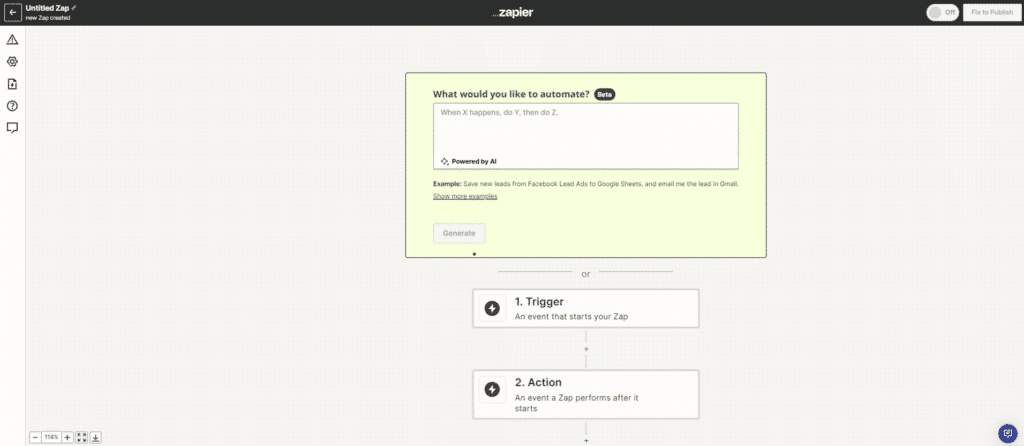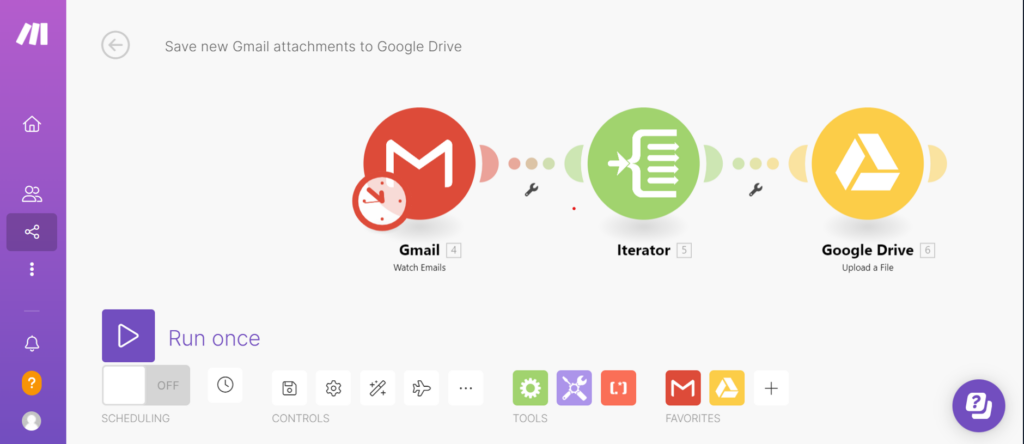The digital market is booming, but there is still a shortage of IT skills. To make up for this shortage, no-code and low-code tools enable you to create applications or websites with little or no code.. This which, since 2020, has further accelerated the digital transformation companies of all sizes. And so.., what are the different tools and uses? How can automation using these solutions improve efficiency? Sébastien Lamour, low-code/no-code data visualisation expert, explains.

The value proposition of no-code and low-code tools has been confirmed by the economic consequences of the Covid-19 pandemic. These tools make it easier to create applications or websites and data managementgenerate dashboards. Above all, they automate processes, without any knowledge of the code. The result is : save time and increase productivity.
According to Gartner, 70 % of new applications developed by organisations will use low-code or no-code technologies by 2025. In addition, 500 million new applications will be created to meet the challenges of accelerating digital transformation over the next five years.
For businesses, automating workflows has become essential. The result: time savings on day-to-day tasks, and much more besides.
Low-code/no-code tools for automating tasks

Automating IT processes with technologies that include low-code tools, robotic process automation (RPA), artificial intelligence (AI). These technologies are becoming accessible and are a key step in helping to reduce tasks and increase productivity.
If we take a closer look, the RPA is more oriented towards thehyperautomation. For companies, this means automating simple tasks, but above all more complex ones, just as a human being would, using applications and above all systems.
And there are many possibilities. But they do require a degree of familiarity with automation tools, and even more with RPA (technical or experienced profiles).
That said, anyone in a company can jump in and start creating their own automated workflows with little or no code.
What is automation?
This is a technology that automates specific tasks performed by computer programmes.
This intelligent software robot records what a user does in terms of operations via software in order to automate certain tasks.
Why use a no-code tool for automation?
No-code automation applications are an attempt to make them accessible to as many people as possible.
Like other solutions on the market, these applications operate autonomously. They take care of repetitive management tasks. What's more, these tools can be assigned to manage a wide range of tasks. For example, the automatic sending of replies to e-mails. Or automating processes that require more data to generate documents (presentations, quotes, invoices, payslips). Even the integration of variables: images, time, geographical data, calculation results, etc.
As a result, this type of tool is capable of producing exceptional results quickly on repetitive tasks with low added value. Users from a wide range of backgrounds and all types of company have integrated these tools very quickly.
Digital applications take care of simple, repetitive and time-consuming tasks. This allows employees, managers and company directors to devote more time to higher added-value activities.
RPA technology goes further. It improves management and control functions. And it industrialises these automation processes within larger companies.
There is now a wide range of automation tools on offer, covering very different needs and requirements.
Advantages of no-code/low-code tools
- No-code defines a new category of digital tools that enable people with no technical knowledge to build bespoke applications and software, all without having to write a single line of code.
- The aim of no-code is to democratise access to digital tools by offering solutions that can be implemented quickly.
- Companies with no technical programming expertise can use no-code to achieve their automation objectives without having to write a single line of code.
- Quick to learn
- Rapid development
- Target: non-technical users
- Cost, efficiency
- Reducing errors
- Scalability
The different tools on the market
There are several types of code-free automation solutions that can simplify and accelerate repetitive tasks and processes. Workflow automation technologies, for example, allow users to develop and manage workflows.
These platforms offer a visual interface on which the integrations of different applications can be mapped easily and without code. The whole system works via APIs.
The former are general-purpose (or even low-code) no-code tools based on iPaaS platforms. They are perfectly suited to optimising processes and workflows and increasing productivity in general. They are designed for people with no coding skills.
Examples
- Zapier
- Make (formerly Integromat)
- n8n in open source mode
Admittedly, these tools have user-friendly interfaces. But they require learning and experience, and even expertise and programming knowledge for complex, multi-stage workflows.
Zapier has paved the way for accessible automation with a trigger (receiving an e-mail) and an action (replying to the e-mail). And it offers a simplified version of process automation that connects a large number of applications on the market with a vast library of APIs.

The Make stands out for its visual approach. The latest n8n incorporates the same approach, but in an open source version of automation.

What are the main RPA tools on the road to hyperautomation?
There are also several RPA tools with the same logic of accessible interfaces. Their use depends on the context and the objectives established beforehand.
For example, UiPath is one of the leading companies in the world of RPA. The company offers a platform designed to efficiently automate the business processes of office software and web applications.
Another RPA pioneer, Blue Prism was the first company to formalise its technology under this term. It uses Microsoft's .NET technologies to create automation robots dedicated to administrative procedures.
On another front, customer relationship specialist Pega is integrating the RPA tool into its CRM (customer relationship management) offering.
As for Microsoft, the software giant is investing massively in low-code and in its Power Platform.
To find out more
Microsoft Power Platform offers a low-code ecosystem. It covers a wide range of needs. Power Automate offers everything that's available in terms of process automation (from simple to complex), including RPA. It integrates perfectly with current Microsoft applications (but not only). It also offers synergies with other tools in the Microsoft environment (Office 365, OneDrive, Teams, etc.).
Use cases: what needs?
It would be difficult to summarise the use cases for these automation tools, given the variety and diversity of the issues involved:
- Invoice processing: automation that extracts data from invoices, validates it and enters it into an accounting system.
- Customer service: automation of e-mail responses to customer queries, processing of refunds and updating of customer information.
- HR operations: automation of employee onboarding, benefits administration and payroll processing.
- Financial reporting: automation of financial reporting, including data collection, analysis and report generation.
- Supply chain management: automate tasks such as monitoring stock levels, processing purchase orders and updating shipping information.
- IT operations: automation of server maintenance, software updates and system back-ups.
In each of these use cases, automation and RPA tools are helping companies to improve their productivity. Regardless of their size, area of execution or sector of activity.
In conclusion, automation using no-code and low-code tools is revolutionising the way companies manage workflows and processes.
Today, these tools offer a host of possibilities, and even more so with built-in artificial intelligence. This multiplies the use cases and the power of the platforms to go further into human behaviour and accelerate the possibilities of automation.
With recent advances, the combination of AI and automation is a given. It offers great opportunities that go beyond simple task management.





